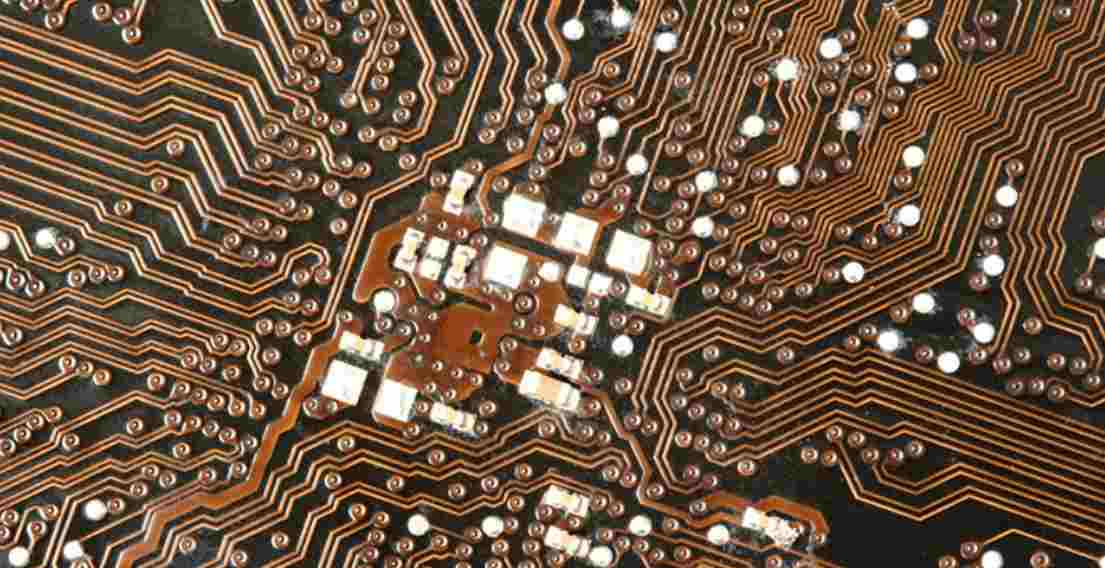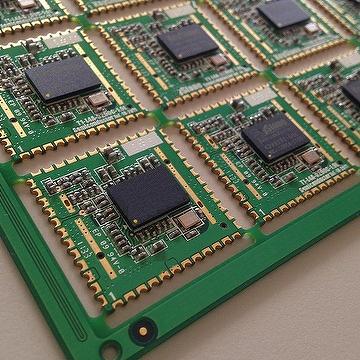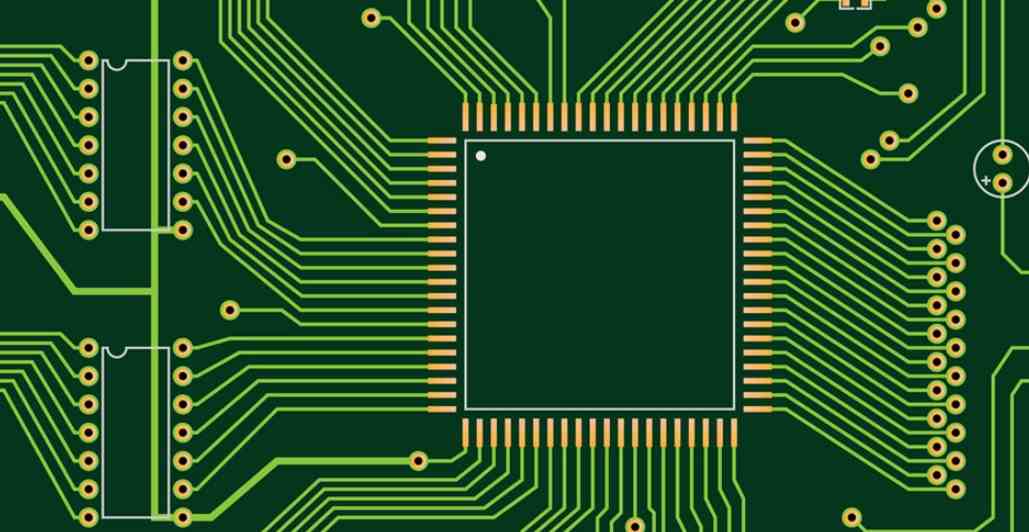
Circuit board assembly and welding, the initial process is washing, that is, after the board through "Wave soldering" or "Surface Mount" welding, the final use of cleaning agents or pure water to clean the pollutants on the board, later with the design of electronic parts more and more diverse, but also more and more small, Washing gradually appeared some problems, and because the cleaning process of PCBA is too troublesome, it later evolved the non-washing process.
The main purpose of cleaning PCB board after assembly is to remove the residual flux on PCB surface
For SMT process, the biggest difference between "wash process" and "wash free process" is that the flux composition in solder paste is different, wave welding process is pure pre-furnace flux composition.
This is because the main purpose of flux is to remove the surface tension and oxides of the welded material to obtain a clean welding surface, and the best medicine to remove oxidation is chemical agents such as "acid" and "salt". However, "acid" and "salt" are corrosive, and if they remain on the PCB surface, they will corrode the copper surface over time, resulting in serious poor quality.
In fact, even if the board is produced using the washless process, if the formula of the flux is not proper (usually the use of some unknown solder paste, or a special emphasis on the effect of eating tin or can be removed from the oxide of the solder paste.
Because these solder paste flux will usually add weak acid) or flux residue is too much, after a long time solder paste and air moisture and pollution substances mixed may also cause corrosion on the copper surface of the circuit board. Cleaning is necessary when boards are at risk of corrosion. Therefore, it is not that the "wash free process" of the board does not need to be cleaned, of course, can not be washed, do not wash, after all, washing is very troublesome.
In addition, there are special purpose situations that require wash-free boards to be washed, such as:
Sell PCBA to end customers, hope that the surface of the board is clean, give customers a good appearance impression.
PCBA subsequent process needs to increase the adhesion of the circuit board surface. For example, Conformalcoating coating needs to pass the test.
Or to avoid the solder paste residue to produce unnecessary chemical reactions, such as Potting process.
The residual flux from the wash free process can cause micro-conduction (impedance reduction) in wet environments, especially for fine pitch parts, such as the bottom of passive components under 0201 size, especially for small pitch BGA packages.
Because the solder joint is set at the bottom of the parts, it is easy to retain too much flux, and moisture is also easy to adhere to it after cooling when it is not used, and there is leakage current, causing leakage current or increasing retention current.
Therefore, whether the board needs washing or not depends on individual needs. It is important to understand why it needs washing. What is the purpose of washing?
Types of PCBA flux
Since the biggest difference between PCB circuit board "wash process" and "wash free process" is flux, and the biggest purpose of washing is to "remove flux residue" and other contamination, we need to know what kinds of flux are available.
Flux is basically divided into the following categories:
1. Inorganic series flux
Early flux will add inorganic acid and inorganic salts and other substances (such as hydrochloric acid, hydrofluoric acid, zinc chloride, ammonium chloride), known as "inorganic flux", because inorganic acid and inorganic salts for medium strong acid, so it has a very good cleaning effect, can obtain good soldering effect, excellent solderability.
But the disadvantage is that the corrosion is also very strong, the solder than virtual thick coating or thickness to withstand strong acid cleaning, so the use of this kind of "inorganic flux" must be immediately after strict cleaning, in order to avoid its continued corrosion of copper foil circuit board, practicality is greatly limited.

2. Organic series flux
So some people will be weak acid organic acid (such as lactic acid, citric acid) added in the flux to replace strong acid, called "organic flux", although the degree of cleanliness is not as good as strong acid, but as long as the welding surface pollution is not too serious, it can still play a certain degree of cleaning effect.
It is important that the residue after welding can be retained on the solder for a period of time without serious corrosion, but weak acid is also acid, so after welding or have to wash, so as not to cause line corrosion and other bad.
3. Resin, rosin series flux
Because the washing process is too cumbersome, and not all electronic parts can be washed, such as buzzer (coin battery), spring thimble connector (pogo pin) washing is not recommended.
Later, some people will add rosin to the flux to replace the original acid cleaner, can also play a certain degree of removal of oxides, but rosin as a monomer, chemical activity is weak, to promote the wetting of solder is often not enough, so practical need to add a small number of active agents, in order to improve its activity.
Another characteristic of rosin is that it is inactive in the solid state and only active in the liquid state. Its melting point is about 127 ° C, but its activity can last up to 315 ° C.
At present, the optimal temperature of lead-free solder welding is 240 ~ 250℃, just in the active temperature range of rosin, and its welding residue does not exist corrosion problems, these characteristics make rosin as a non-corrosive flux and is widely used in the welding of electronic equipment.
IPC-J-STD-004 defines four types of flux according to its composition: organic (OR), inorganic (IN), rosin (RO) and resin (RE).
PCBA washing process trouble, shortcomings:
The so-called "washing", is the use of liquid solvent or pure water to clean the board, because the general acidic substances can be dissolved in water, so you can use "water" to dissolve cleaning, so called washing, but no washing flux using rosin can not be dissolved in "water", than need to use "organic solvent" to clean, but also called "water", Most of the washing process will use "ultrasonic" shock to strengthen the cleaning effect and shorten the time, these cleaning agents in the process of cleaning is likely to penetrate into some electronic parts or circuit boards with small pores to cause bad.
Some may fail because the liquid does not dry after infiltration, such as spring switch, spring thimble connector (pogo pin).
Or after cleaning, the dirty things will be brought to the parts of the interior so that the work is not smooth or bad contact, such as buzzer, horn, micro switch... Wait for parts.
Some may fail because they cannot withstand shock cleaning, such as button batteries.
These electronic parts that have doubts about the washing process must generally be arranged to be welded after washing, so as to avoid permanent damage caused by cleaning, which increases the production process links, and the more the production process, the easier it is to have good damage, virtually causing waste to the production process, and the welding after washing is usually hand welding, welding quality is difficult to control. So again, don't wash it if you can.
Additional note:
The solder paste and flux can be divided into washing and non-washing. The ingredients used in the general washing solder paste and flux can be dissolved in water, while the flux in the non-washing process can not be dissolved in water, and can only be cleaned with organic solvents. Therefore, if you have decided to clean PCBA, it is recommended to use washed solder paste and flux before, so as to help clean the flux.
An introduction to the ingredients of flux
The content of flux basically includes the following four main components:
Resin rosin (Resin) : 40~50%.
Rosin is viscous, which can form a protective layer on the surface of the metal to be welded to prevent air, reduce the contact with oxygen during heating, and reduce the oxidation rate.
activator: 2~5%.
The main role is to clean and remove the oxide layer on the metal surface, and reduce the surface tension of solder, help solder.
solvent: 30%.
The solvent helps dissolve and mix the different chemicals in the flux and allows the flux to be evenly mixed in the tin powder. Solvent is volatile, so it is not recommended to let the solder paste long-term exposure to the air, to avoid solvent volatilization, solder paste dry, affect welding.
Thixotropic agent (rheology modifier) : 5%.
It is used to adjust the viscosity of the solder paste to achieve the purpose of paste, enhance the printability of the solder paste, so that the solder paste printed on the printed circuit board can still maintain the original shape without collapse.







